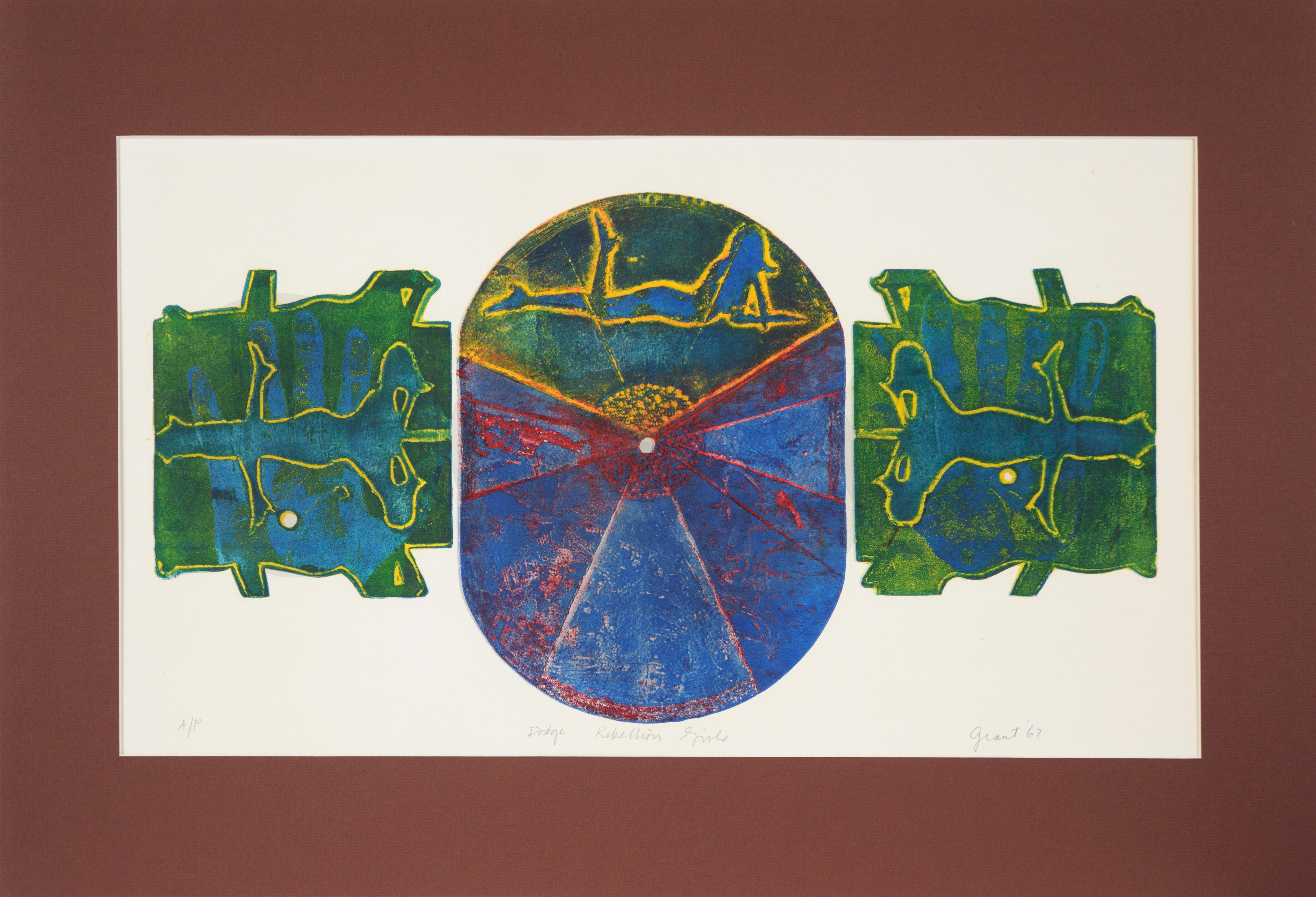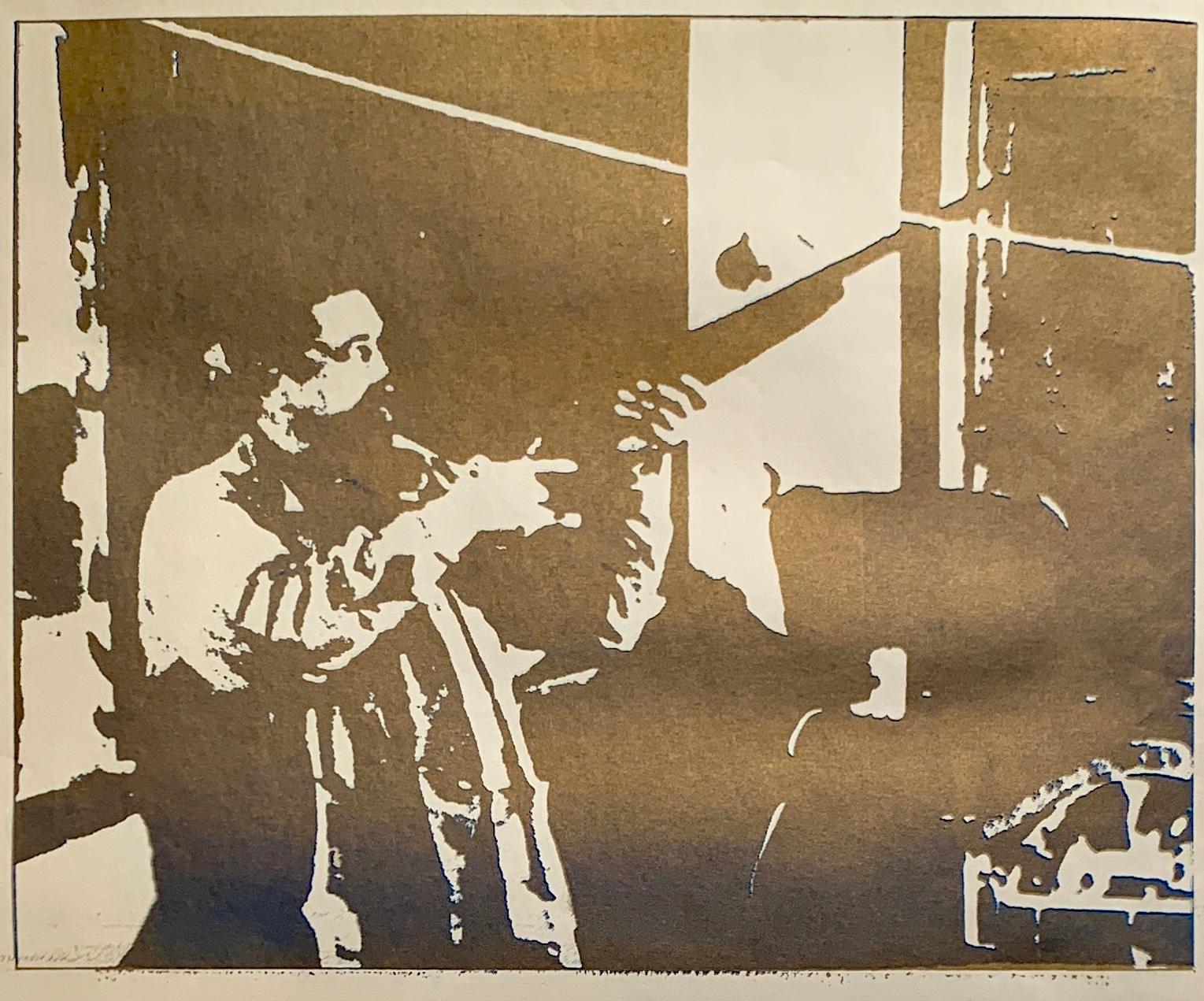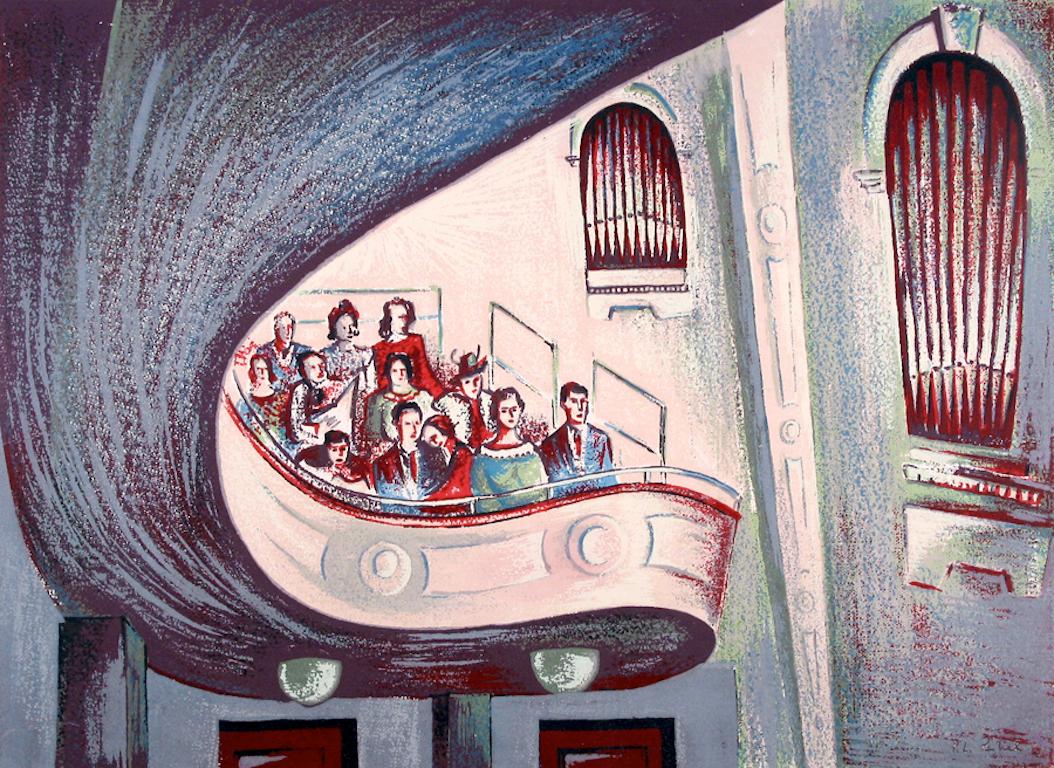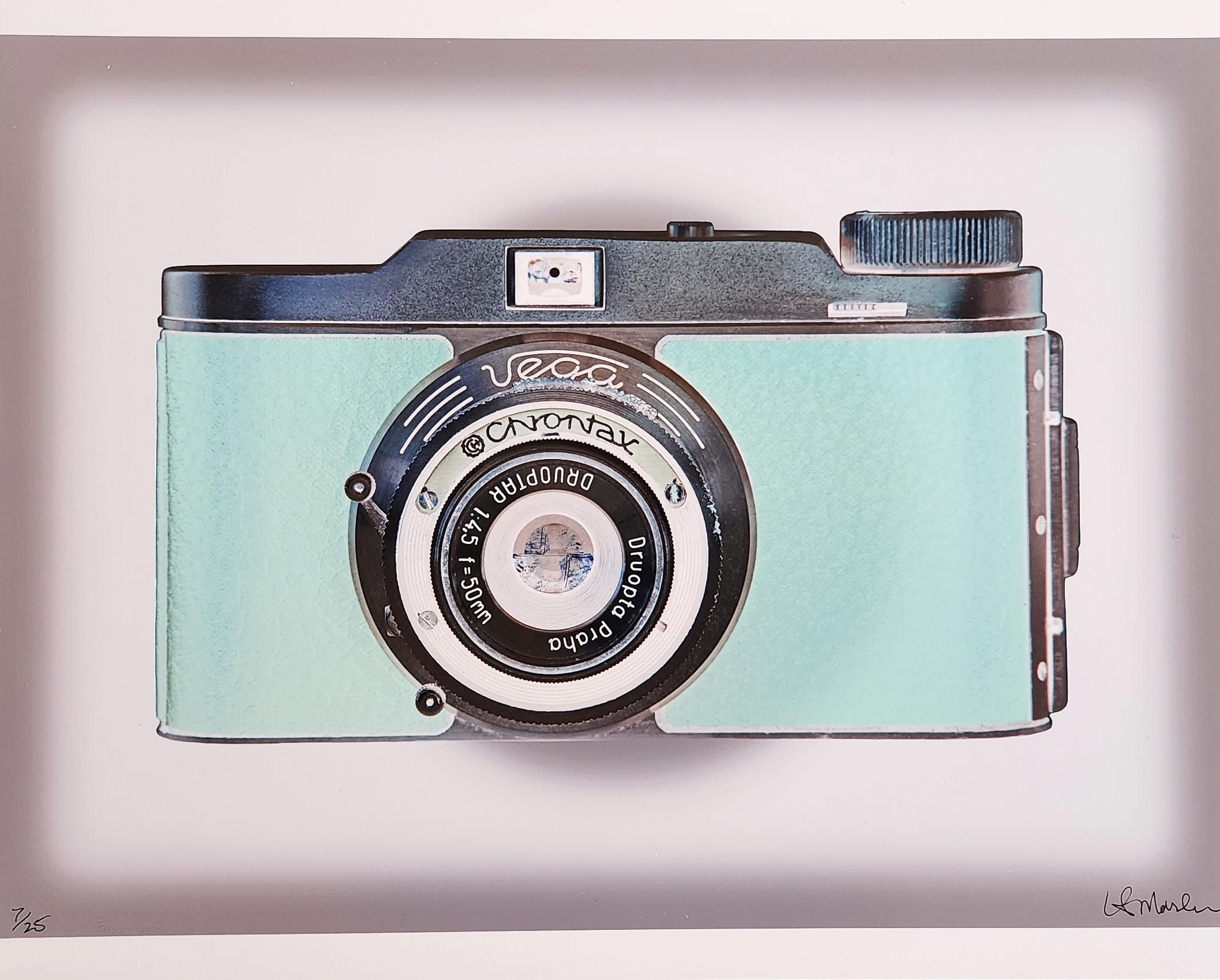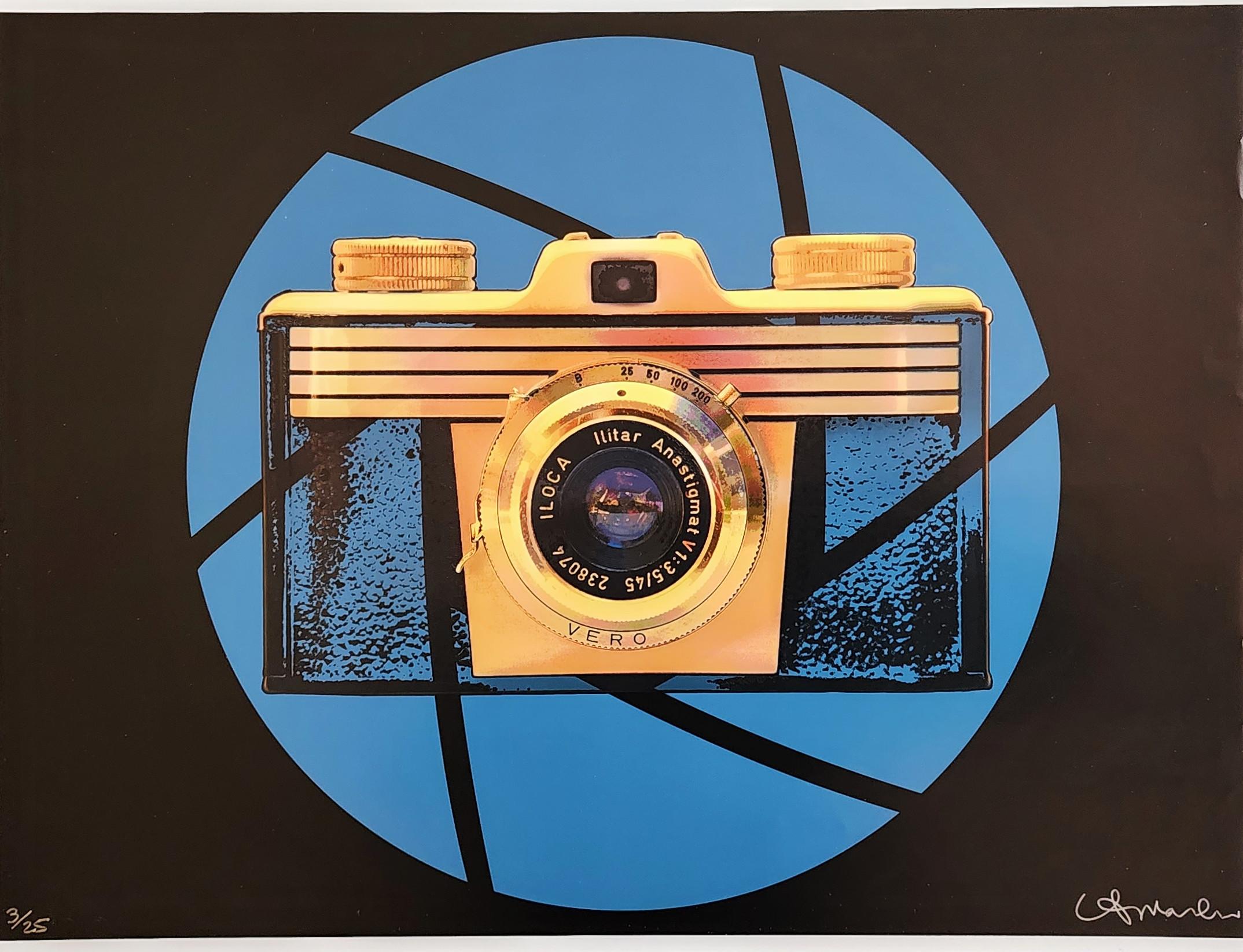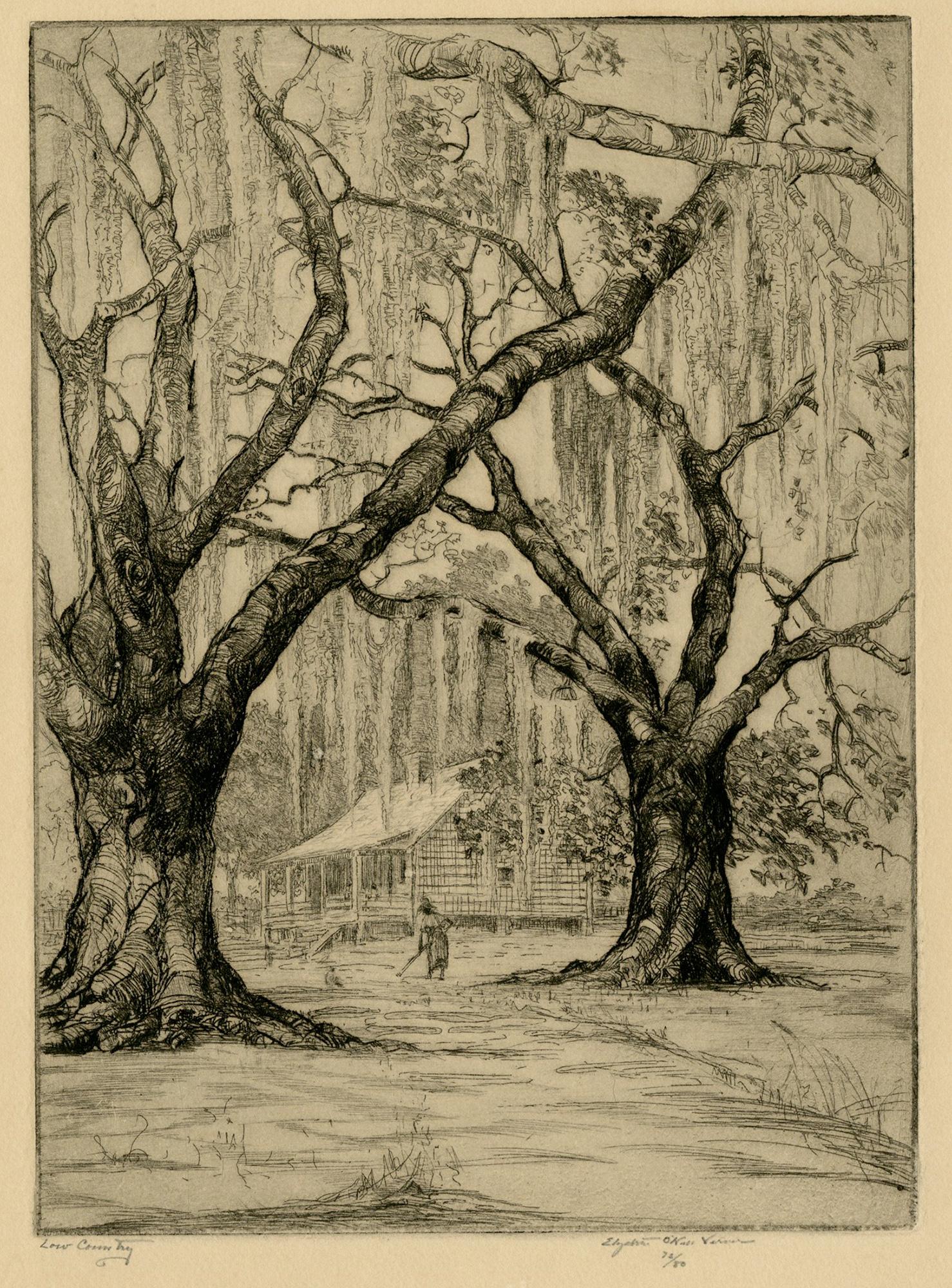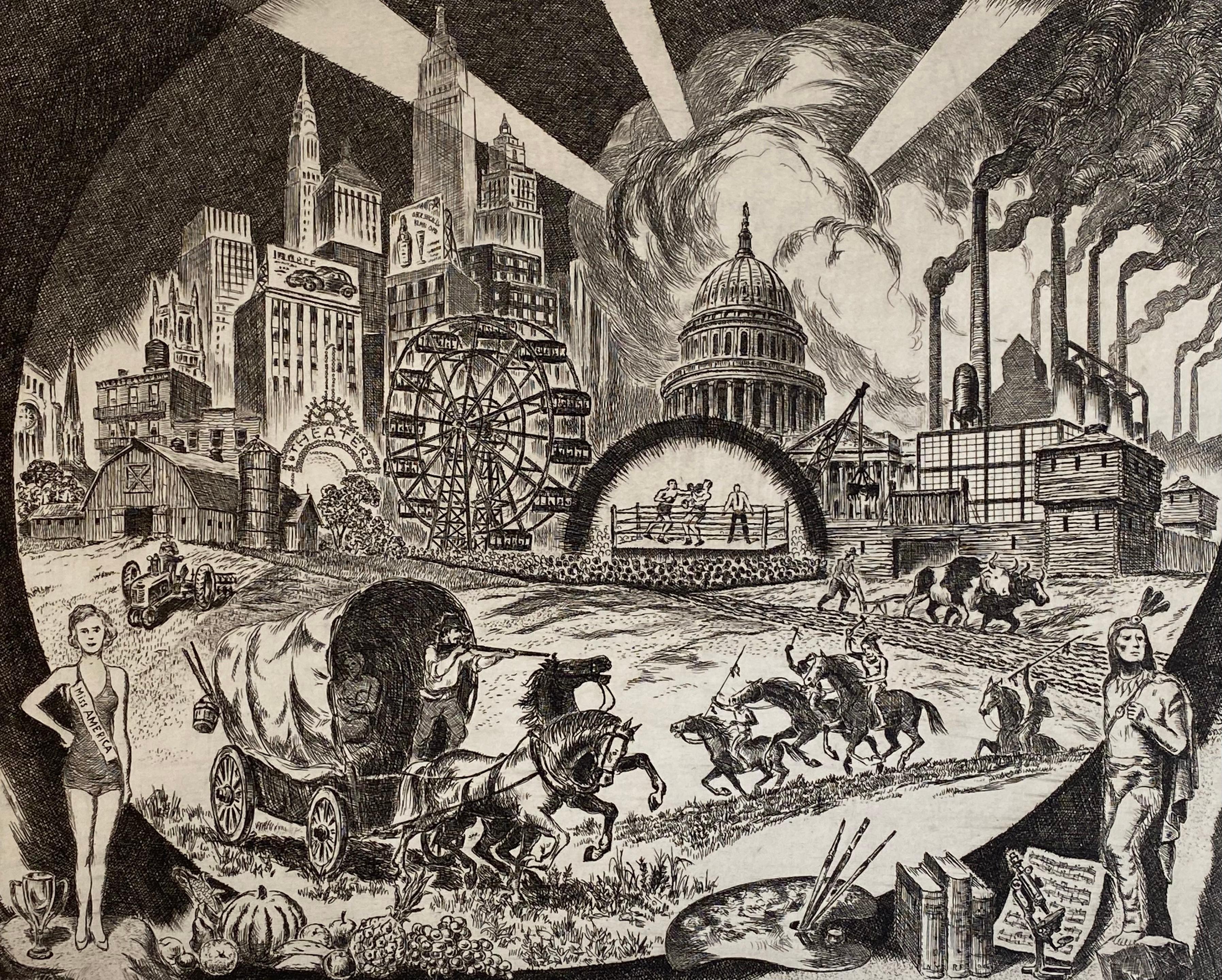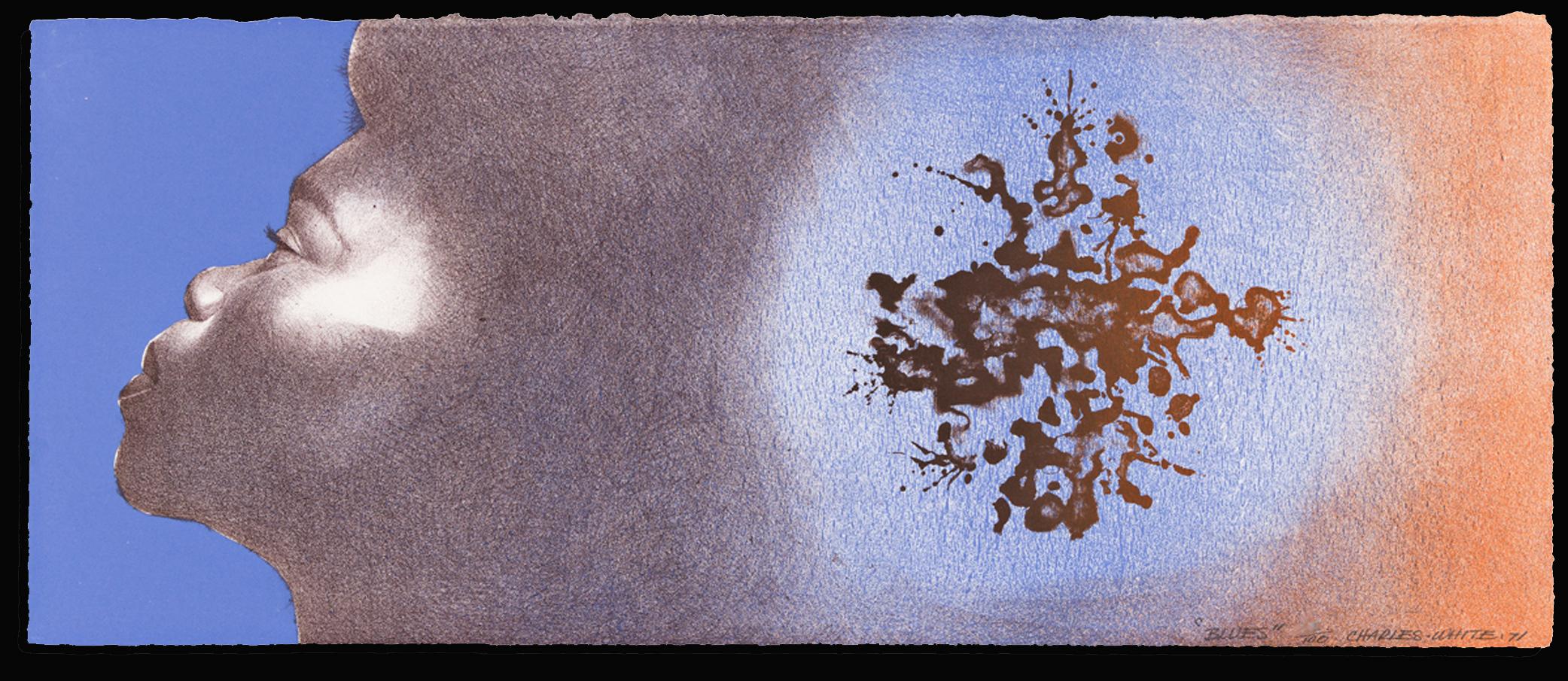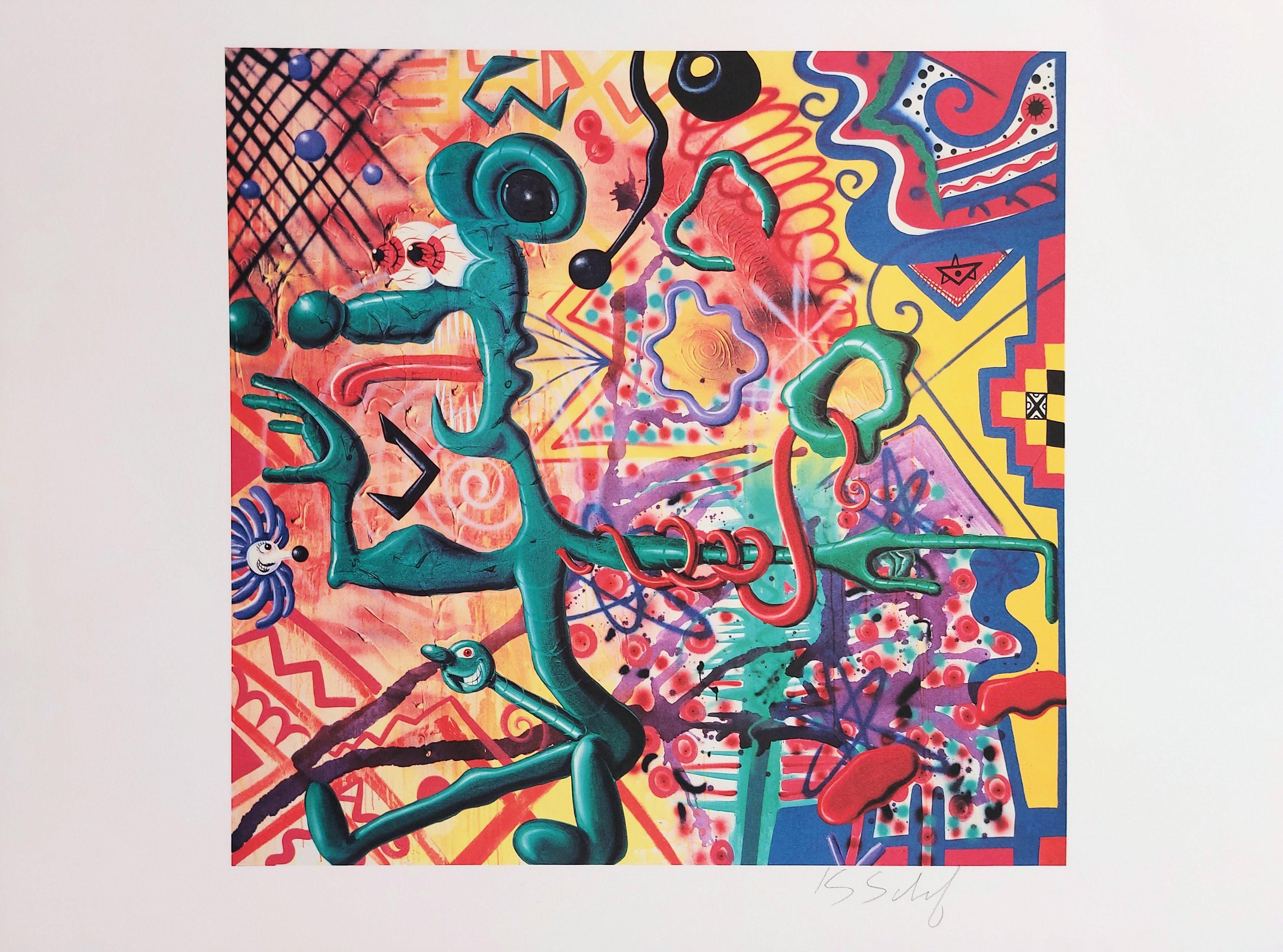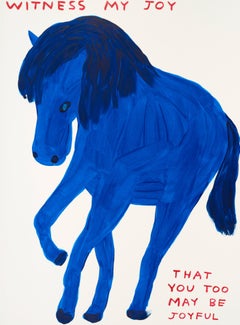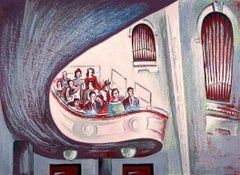
DANIEL ARSHAM: GROTTO OF LAOCOÖN Huge Hand signed & numbered silkscreen. Modern
View Similar Items
Daniel ArshamDANIEL ARSHAM: GROTTO OF LAOCOÖN Huge Hand signed & numbered silkscreen. Modern2020
2020
About the Item
- Creator:Daniel Arsham (1980, American)
- Creation Year:2020
- Dimensions:Height: 57.01 in (144.78 cm)Width: 48.01 in (121.92 cm)
- Medium:
- Movement & Style:
- Period:
- Condition:
- Gallery Location:Madrid, ES
- Reference Number:1stDibs: LU1033110581512
Daniel Arsham
Daniel Arsham lives and works in New York. Arsham has been exhibited worldwide, including at the Moco Museum, Amsterdam; the How Museum, Shanghai; High Museum of Art, Atlanta, GA and the Contemporary Art Center, Cincinnati, OH. His works are included in the permanent collections of the Pérez Art Museum, Miami, FL; the Walker Art Center in Minneapolis, MN and the Centre Pompidou, Paris. His artistic practice includes several high profile collaborations with choreographer Merce Cunningham, Producer Pharrell Williams and Designer Hedi Slimane and companies such as Dior and Rimowa. Arsham is the co-founder of Snarkitecture, a New York-based collaborative design practice established in 2007 to investigate the boundaries between disciplines of art, architecture and design. A component of Arsham’s iconic and immediately recognizable practice is the conception of his works as fossilized “future” relics that distort the viewer’s perception of space and time.
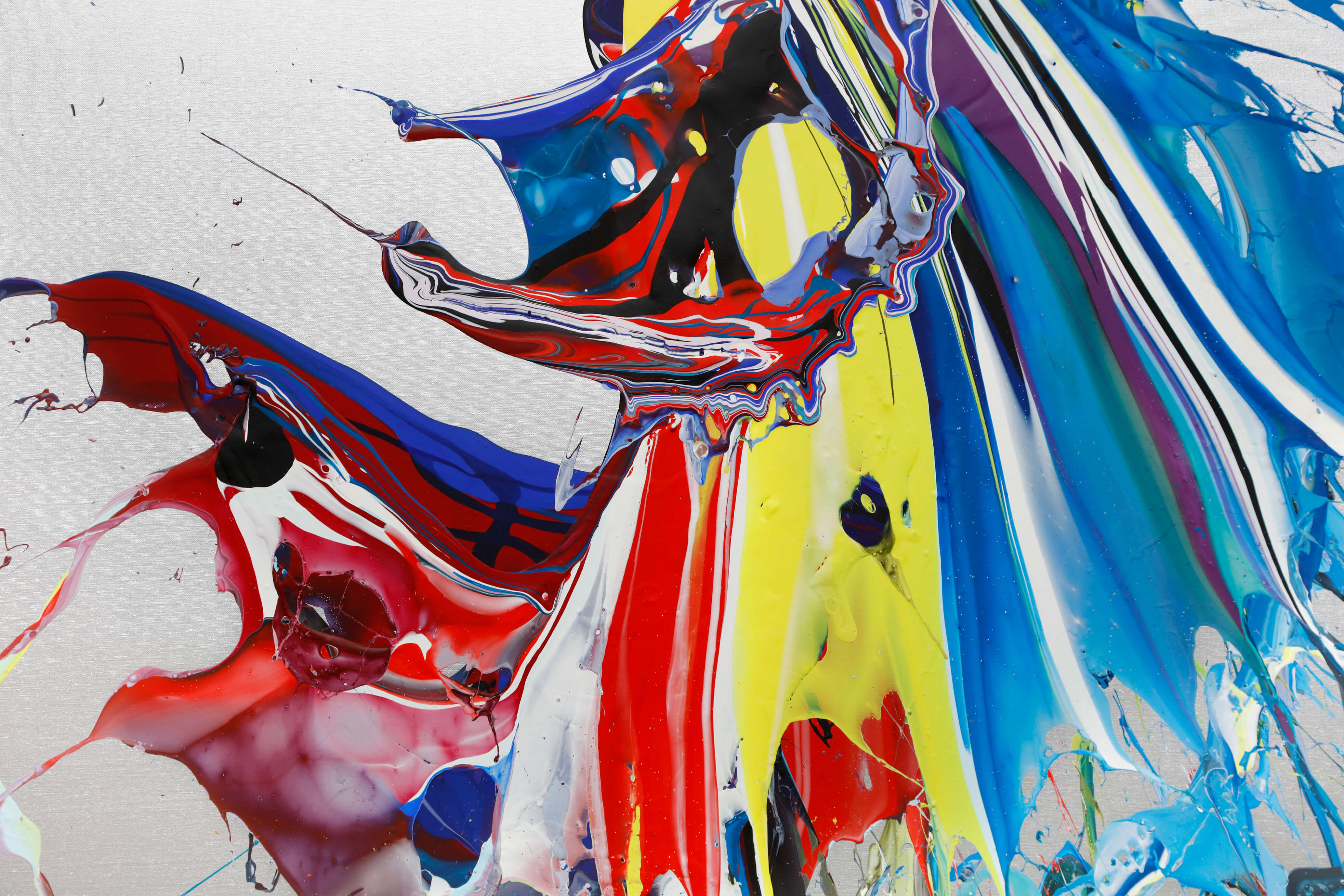
- FAILE - THE RIGHT ONE, HAPPENS EVERYDAY Pop Street art American Pin-Up DesignBy FaileLocated in Madrid, MadridFAILE - THE RIGHT ONE, HAPPENS EVERYDAY Date of creation: 2014 Medium: Screen print on Coventry Rag paper Edition number: 418/450 Size: 71 x 61 cm Condition: In mint conditions, bran...Category
2010s Modern Figurative Prints
MaterialsPaper, Screen
- DAVID SHRIGLEY - WITNESS MY JOY Modern Design Figurative British Artist BlueBy David ShrigleyLocated in Madrid, MadridDAVID SHRIGLEY - WITNESS MY JOY Date of creation: 2022 Medium: Screen print & varnish on Somerset paper Edition: 125 + 12 AP Size: 75 x 56 cm Condition: Brand new, inside its custom ...Category
1970s Modern Figurative Prints
MaterialsPaper, Varnish, Screen
- DAMIEN HIRST - EMPRESSES: SUIKO Limited Modern Butterflies glitter redBy Damien HirstLocated in Madrid, MadridDamien Hirst - THE EMPRESSES - SUIKO Date of creation: 2022 Medium: Laminated giclée print on aluminium composite and screen printed with glitter. Edition number: 1191/3310 (1.657 ph...Category
2010s Modern Figurative Prints
MaterialsGlitter, Panel, Giclée, Screen
- DAMIEN HIRST - EMPRESSES: NŪR JAHĀN - Limited edition. Butterflies Glitter RedBy Damien HirstLocated in Madrid, MadridDAMIEN HIRST - THE EMPRESSES - NŪR JAHĀN Date of creation: 2022 Medium: Laminated giclée print on aluminium composite and screen printed with glitter. Edition number: 1013/3041 (1.48...Category
2010s Modern Figurative Prints
MaterialsGlitter, Panel, Giclée, Screen
- DAMIEN HIRST - EMPRESSES: WU ZETIAN - Limited. Butterflies Glitter RedBy Damien HirstLocated in Madrid, MadridTHE EMPRESSES - WU ZETIAN Date of creation: 2022 Medium: Laminated giclée print on aluminium composite and screen printed with glitter. Edition number: 2.853 (1.284 physical + 1.569 ...Category
2010s Modern Figurative Prints
MaterialsGlitter, Panel, Giclée, Screen
- DAMIEN HIRST - EMPRESSES: SUIKO Limited Modern Butterflies glitter redBy Damien HirstLocated in Madrid, MadridDamien Hirst - THE EMPRESSES - SUIKO Date of creation: 2022 Medium: Laminated giclée print on aluminium composite and screen printed with glitter. Edition number: 1191/3310 (1.657 ph...Category
2010s Modern Figurative Prints
MaterialsGlitter, Panel, Giclée, Screen
- "Dodge Rebellion Girls" - 1967 Original Silkscreen on Paper Artists ProofBy Marc Foster GrantLocated in Soquel, CA"Dodge Rebellion Girls" - 1967 Silkscreen on Paper 1967 color silkscreen depicting the Dodge Rebellion Girls by Marc Foster Grant (American, b. 1947). A silhouette of the 'dodge gi...Category
1960s American Modern Figurative Prints
MaterialsPaper, Ink, Screen
- "Gold and Blue Gun" 1970s Original Portrait SilkscreenLocated in Arp, TXArtist unknown "Gold and Blue Gun" c. 1970s Silkscreen on paper Image size 21.25"x17" paper size 26"x40" unframed $350 Unsigned *Listed price reflects custom framing selected by sell...Category
1970s American Modern Figurative Prints
MaterialsPaper, Screen
- "Balcony" 1938 WPA Print Mid 20th Century American Broadway Theatre ModernismBy Leon BibelLocated in New York, NY"Balcony" 1938 WPA Print Mid 20th Century American Broadway Theatre Modernism. Silk screen on paper, 15” x 20". Numbered 15/20 lower left. Pencil si...Category
1930s American Modern Figurative Prints
MaterialsPaper, Screen
$6,000 Sale Price20% Off - "The Capture, " Jacob Lawrence, Harlem Renaissance, Black Art, Haitian SeriesBy Jacob LawrenceLocated in New York, NYJacob Lawrence (1917 - 2000) The Capture of Marmelade (from The Life of Toussaint L'Ouverture series), 1987 Color screenprint on Bainbridge Two Ply Rag paper Sheet 32 1/8 x 22 1/16 inches Sight 29 3/4 x 19 1/4 inches A/P 1/30, aside from the edition of 120 Signed, titled, dated, inscribed "A/P" and numbered 1/30 in pencil, lower margin. Literature: Nesbett L87-2. A social realist, Lawrence documented the African American experience in several series devoted to Toussaint L’Ouverture, Frederick Douglass, Harriet Tubman, life in Harlem, and the civil rights movement of the 1960s. He was one of the first nationally recognized African American artists. “If at times my productions do not express the conventionally beautiful, there is always an effort to express the universal beauty of man’s continuous struggle to lift his social position and to add dimension to his spiritual being.” — Jacob Lawrence quoted in Ellen Harkins Wheat, Jacob Lawrence: The Frederick Douglass and Harriet Tubman Series of 1938 – 40. The most widely acclaimed African American artist of this century, and one of only several whose works are included in standard survey books on American art, Jacob Lawrence has enjoyed a successful career for more than fifty years. Lawrence’s paintings portray the lives and struggles of African Americans, and have found wide audiences due to their abstract, colorful style and universality of subject matter. By the time he was thirty years old, Lawrence had been labeled as the “foremost Negro artist,” and since that time his career has been a series of extraordinary accomplishments. Moreover, Lawrence is one of the few painters of his generation who grew up in a black community, was taught primarily by black artists, and was influenced by black people. Lawrence was born on September 7, 1917,* in Atlantic City, New Jersey. He was the eldest child of Jacob and Rosa Lee Lawrence. The senior Lawrence worked as a railroad cook and in 1919 moved his family to Easton, Pennsylvania, where he sought work as a coal miner. Lawrence’s parents separated when he was seven, and in 1924 his mother moved her children first to Philadelphia and then to Harlem when Jacob was twelve years old. He enrolled in Public School 89 located at 135th Street and Lenox Avenue, and at the Utopia Children’s Center, a settlement house that provided an after school program in arts and crafts for Harlem children. The center was operated at that time by painter Charles Alston who immediately recognized young Lawrence’s talents. Shortly after he began attending classes at Utopia Children’s Center, Lawrence developed an interest in drawing simple geometric patterns and making diorama type paintings from corrugated cardboard boxes. Following his graduation from P.S. 89, Lawrence enrolled in Commerce High School on West 65th Street and painted intermittently on his own. As the Depression became more acute, Lawrence’s mother lost her job and the family had to go on welfare. Lawrence dropped out of high school before his junior year to find odd jobs to help support his family. He enrolled in the Civilian Conservation Corps, a New Deal jobs program, and was sent to upstate New York. There he planted trees, drained swamps, and built dams. When Lawrence returned to Harlem he became associated with the Harlem Community Art Center directed by sculptor Augusta Savage, and began painting his earliest Harlem scenes. Lawrence enjoyed playing pool at the Harlem Y.M.C.A., where he met “Professor” Seifert, a black, self styled lecturer and historian who had collected a large library of African and African American literature. Seifert encouraged Lawrence to visit the Schomburg Library in Harlem to read everything he could about African and African American culture. He also invited Lawrence to use his personal library, and to visit the Museum of Modern Art’s exhibition of African art in 1935. As the Depression continued, circumstances remained financially difficult for Lawrence and his family. Through the persistence of Augusta Savage, Lawrence was assigned to an easel project with the W.P.A., and still under the influence of Seifert, Lawrence became interested in the life of Toussaint L’Ouverture, the black revolutionary and founder of the Republic of Haiti. Lawrence felt that a single painting would not depict L’Ouverture’s numerous achievements, and decided to produce a series of paintings on the general’s life. Lawrence is known primarily for his series of panels on the lives of important African Americans in history and scenes of African American life. His series of paintings include: The Life of Toussaint L’Ouverture, 1937, (forty one panels), The Life of Frederick Douglass, 1938, (forty panels), The Life of Harriet Tubman, 1939, (thirty one panels), The Migration of the Negro,1940 – 41, (sixty panels), The Life of John Brown, 1941, (twenty two panels), Harlem, 1942, (thirty panels), War, 1946 47, (fourteen panels), The South, 1947, (ten panels), Hospital, 1949 – 50, (eleven panels), Struggle: History of the American People, 1953 – 55, (thirty panels completed, sixty projected). Lawrence’s best known series is The Migration of the Negro, executed in 1940 and 1941. The panels portray the migration of over a million African Americans from the South to industrial cities in the North between 1910 and 1940. These panels, as well as others by Lawrence, are linked together by descriptive phrases, color, and design. In November 1941 Lawrence’s Migration series was exhibited at the prestigious Downtown Gallery in New York. This show received wide acclaim, and at the age of twenty four Lawrence became the first African American artist to be represented by a downtown “mainstream” gallery. During the same month Fortune magazine published a lengthy article about Lawrence, and illustrated twenty six of the series’ sixty panels. In 1943 the Downtown Gallery exhibited Lawrence’s Harlem series, which was lauded by some critics as being even more successful than the Migration panels. In 1937 Lawrence obtained a scholarship to the American Artists School in New York. At about the same time, he was also the recipient of a Rosenwald Grant for three consecutive years. In 1943 Lawrence joined the U.S. Coast Guard and was assigned to troop ships that sailed to Italy and India. After his discharge in 1945, Lawrence returned to painting the history of African American people. In the summer of 1947 Lawrence taught at the innovative Black Mountain College in North Carolina at the invitation of painter Josef Albers. During the late 1940s Lawrence was the most celebrated African American painter in America. Young, gifted, and personable, Lawrence presented the image of the black artist who had truly “arrived”. Lawrence was, however, somewhat overwhelmed by his own success, and deeply concerned that some of his equally talented black artist friends had not achieved a similar success. As a consequence, Lawrence became deeply depressed, and in July 1949 voluntarily entered Hillside Hospital in Queens, New York, to receive treatment. He completed the Hospital series while at Hillside. Following his discharge from the hospital in 1950, Lawrence resumed painting with renewed enthusiasm. In 1960 he was honored with a retrospective exhibition and monograph prepared by The American Federation of Arts. He also traveled to Africa twice during the 1960s and lived primarily in Nigeria. Lawrence taught for a number of years at the Art Students League in New York, and over the years has also served on the faculties of Brandeis University, the New School for Social Research, California State College at Hayward, the Pratt Institute, and the University of Washington, Seattle, where he is currently Professor Emeritus of Art. In 1974 the Whitney Museum of American Art in New York held a major retrospective of Lawrence’s work that toured nationally, and in December 1983 Lawrence was elected to the American Academy of Arts and Letters. The most recent retrospective of Lawrence’s paintings was organized by the Metropolitan Museum of Art in 2020, and was accompanied by a major catalogue. Lawrence met his wife Gwendolyn Knight...Category
1970s American Modern Figurative Prints
MaterialsScreen, Paper
$10,000 Sale Price20% Off - Vega ChrontaxLocated in Kansas City, MOLouise Marler Vega Chrontax Archival Pigment Print on premium luster 2022 Size: 16x20in Edition: 25 Signed and numbered by hand Stamped COA provided Ref.: 924802-1416 Louise Marler’s photo-based Mixed Media art, is iconic visual vocabulary. Au-thentic style has led to exhibits, art collections and events which integrate his-tory, education, and entertainment. Raised in a family that collected, sold and repaired typewriters. These and other analog, vintage machines are part of her personal history and led naturally to becoming part of the subject matter of her visual expression. Louise Marleris inspired by Americana and also influenced by pop art and technology. “I developed my unique art style in a Santa Monica Airport (former mechanic) hanger turned art studio. I currently live and work in St. Louis where antique row meets the most progressive art culture, as well as Joshua Tree, California, where I created the first Type Inn.” Louise Marler’s work is featured in the documentary film, “The Typewriter in the 21st Century,” and TV shows including “Two and a Half Men,” “Curb Your Enthusiasm,” “The Mentalist,” “Criminal Minds,” “Jane the Virgin,” “Dear White People,” “Lucifer,” “Arrested Development,” “Love Victor, and “A Black Lady Sketch.” film photography, film camera, film is not dead, film community, old camera...Category
2010s American Modern Figurative Prints
MaterialsArchival Paper, Archival Pigment, Archival Ink
$888 Sale Price44% Off - KoniRapid-SLocated in Kansas City, MOLouise Marler KoniRapid-S Archival Pigment Print on premium luster 2022 Size: 16x20in Edition: 25 Signed and numbered by hand Stamped COA provided Ref.: 924802-1417 Louise Marler’s photo-based Mixed Media art, is iconic visual vocabulary. Au-thentic style has led to exhibits, art collections and events which integrate his-tory, education, and entertainment. Raised in a family that collected, sold and repaired typewriters. These and other analog, vintage machines are part of her personal history and led naturally to becoming part of the subject matter of her visual expression. Louise Marleris inspired by Americana and also influenced by pop art and technology. “I developed my unique art style in a Santa Monica Airport (former mechanic) hanger turned art studio. I currently live and work in St. Louis where antique row meets the most progressive art culture, as well as Joshua Tree, California, where I created the first Type Inn.” Louise Marler’s work is featured in the documentary film, “The Typewriter in the 21st Century,” and TV shows including “Two and a Half Men,” “Curb Your Enthusiasm,” “The Mentalist,” “Criminal Minds,” “Jane the Virgin,” “Dear White People,” “Lucifer,” “Arrested Development,” “Love Victor, and “A Black Lady Sketch.” film photography, film camera, film is not dead, film community, old camera...Category
2010s American Modern Figurative Prints
MaterialsArchival Ink, Archival Paper, Archival Pigment
$888 Sale Price44% Off
